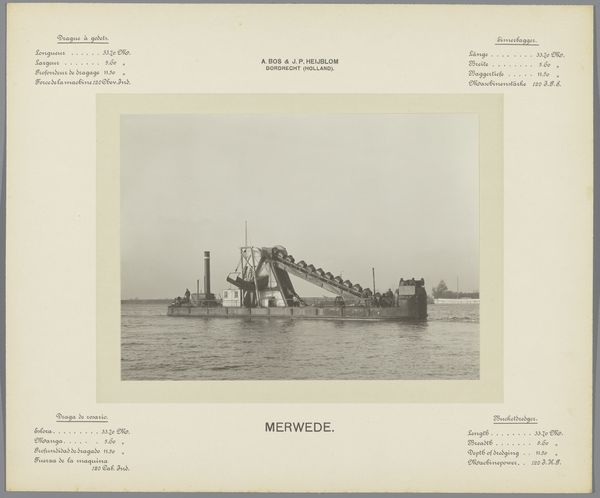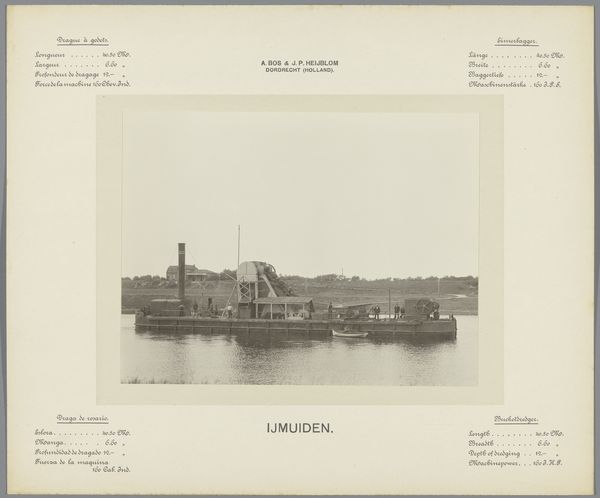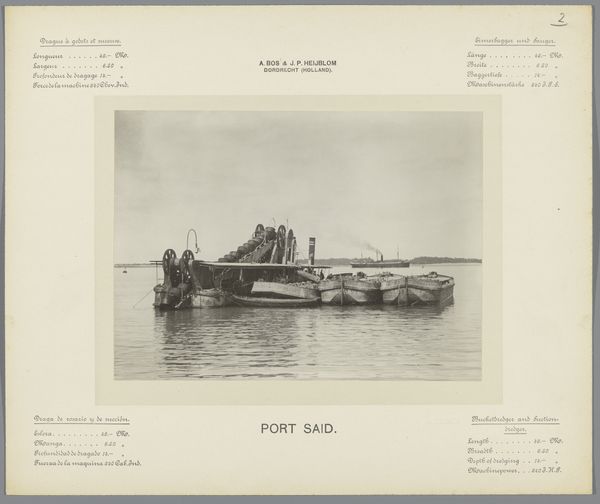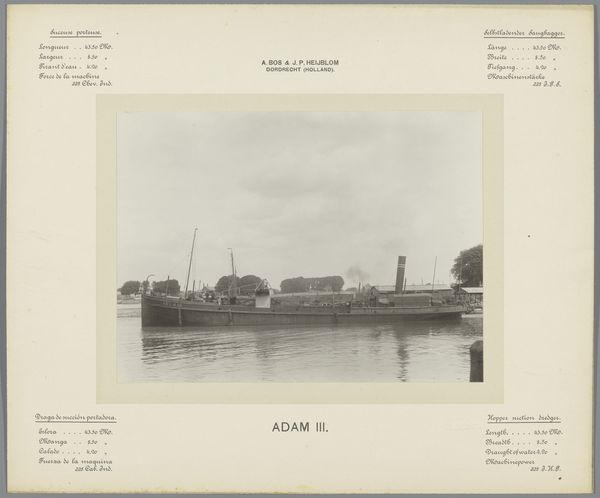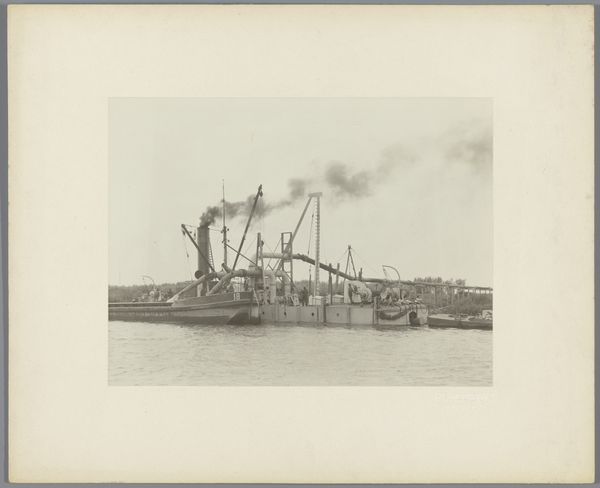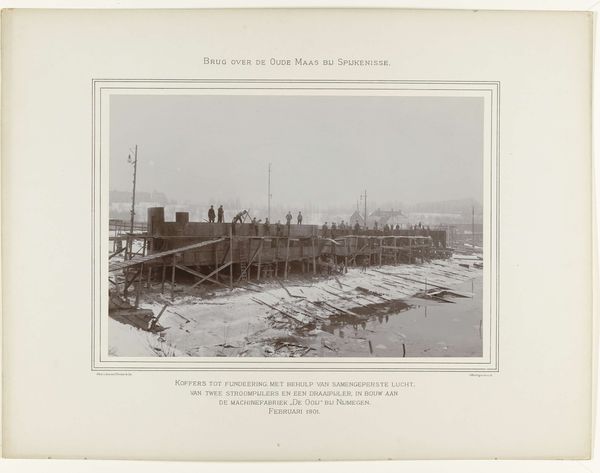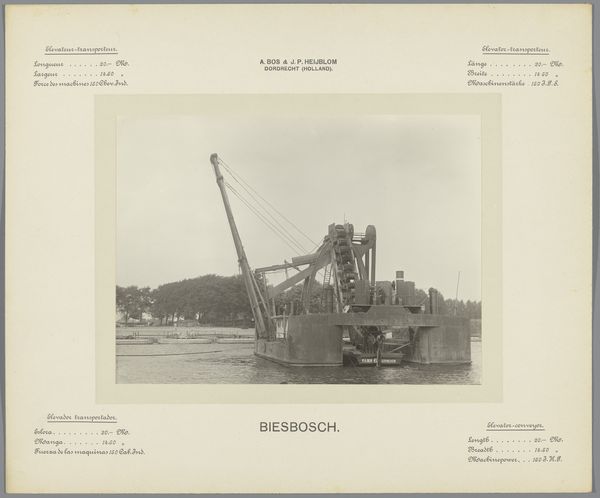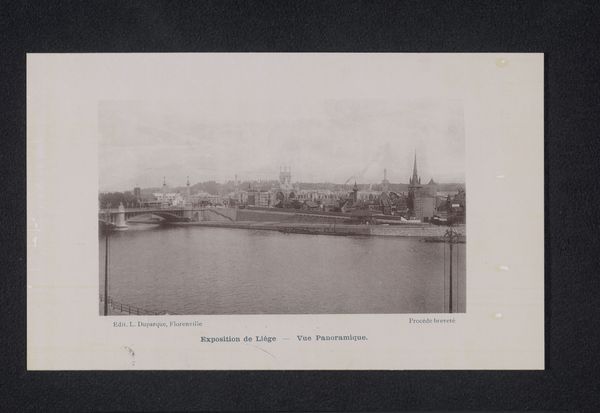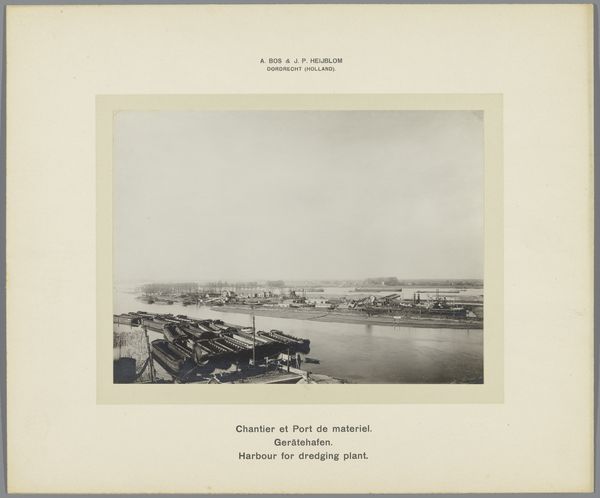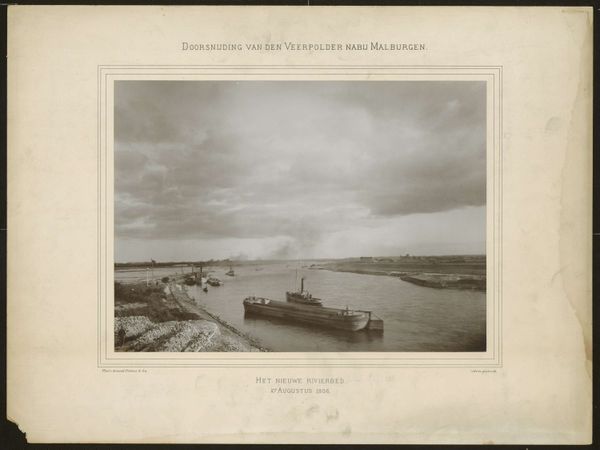
print, photography, gelatin-silver-print
#
still-life-photography
#
dutch-golden-age
#
ship
# print
#
landscape
#
photography
#
gelatin-silver-print
#
cityscape
#
realism
Dimensions: height 165 mm, width 225 mm, height 300 mm, width 360 mm
Copyright: Rijks Museum: Open Domain
Curator: Looking at this gelatin silver print, I’m struck by its melancholic beauty. There’s something incredibly poignant about these ships, particularly the central bucket dredger. Editor: Indeed. Henricus Jacobus Tollens captured this image, titled “Zuiderzee,” sometime between 1900 and 1910. It presents a fascinating look into early 20th-century industrial processes. Curator: My eye is immediately drawn to the textural details – the rust and wear on the metal of the ships. You can almost feel the grit of the coal, hear the sounds of labour that brought those behemoths to life. I see a visual record of intense production. Editor: Absolutely. The composition directs our attention not only to the ship but also to its function within the larger social and economic context. Ports were vital hubs and arteries through which goods flowed. Also note the specifications printed around the image which reveal a great deal about the company that produced this piece and its business practices. Curator: I’m particularly drawn to that aspect. How these prints served, perhaps, as both documentation and promotion for engineering firms. Mass production intersecting with photographic artistry! The laborers who kept those vessels in operation also become part of that story, but not as heroic figures but anonymous ones instead. Editor: I find it compelling to consider the public perception of these industrial machines. Were they seen as symbols of progress, objects of art or just tools for extraction and construction? It would also be great to investigate how displays such as this were curated to appeal to specific audiences. Curator: That consideration also moves us away from individual genius and towards collective action – towards labor. Editor: This image offers insights into the transformation of landscape, resources and also class relations within this particular location at this time. A very relevant document today, as debates surrounding resource exploitation and sustainability intensify. Curator: Agreed. A powerful reflection of industry's past and how its consequences shaped the modern world. Editor: It is interesting to be reminded that photographic processes are themselves part of the larger history of the period and the social conditions within which it was produced.
Comments
No comments
Be the first to comment and join the conversation on the ultimate creative platform.
